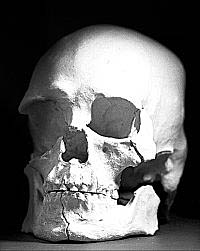Reflections on the practice of collecting American Indian remains. How did we become trophies?
By Mary Annette Pember
In a strange disconnect, I note that folks in this region seem to revere burial sites containing descendants of their relatives. Vandalism of a cemetery is big news hereabouts.
The Cincinnati Enquirer ran a story not long ago about damage done to the Williamsburg Township Cemetery, a small town in southwestern Ohio. Cemetery sexton Earl Whiteman said,
“I can't even begin to guess at the cost of all the damage.” “It kind of makes me sick. I don't know what they've gained by doing this. This is sacred ground.”
“They (non-Indians) simply don’t see us as quite human and therefore our dead are unworthy of respect,” maintains Vicky Whitewolf, Cherokee, executive director of the Cincinnati group, Indigenous Cultural Advocacy in Resources and Education. The group advocates for the repatriation of Native American remains.
“It’s all about power and privilege,” according to Henrietta Mann, Cheyenne, professor emeritus of Native American Studies at Montana State University. She explains that the same sense of entitlement that led to the depopulation of indigenous peoples from North America in the name of Manifest Destiny (a philosophy of white, European hegemony) allows non-Indians to keep Indian remains as trophies.


No comments:
Post a Comment